Starting Your Plan with Preparedness
There is plenty to do during non-emergency times to make sure your community is prepared. With this section you will start developing your community’s emergency plan. Bring together a group of dedicated stakeholders and begin the planning process.
Use the following modules to learn more about your community, and create an emergency network, a group of partners that can help you develop and carry out your community’s emergency plan. Use the plan template that is part of this toolkit to capture important information and decisions to build your plan.
IN THIS CHAPTER:
-
Get Organized
-
Define Your Community
-
Map Your Community
-
Build an Emergency Network
-
Plan Inclusively
-
Educate Your Community
1. GET ORGANIZED
OBJECTIVES:
-
Set goals and milestones for your planning process.
-
Identify how your lead team and the larger network will organize and communicate during emergency and non-emergency times.
THINGS TO CONSIDER:
Remember—you are starting this process with a few dedicated community members but will look to build a larger network of partners that can play a role during emergencies.
Mission and Goals:
What are your goals? Think about what you would like to see as the end result of this process. Some examples include:
-
Educate your community and get residents individually prepared.
-
Disseminate information during times of emergency.
-
Focus on the most vulnerable individuals in your community.
-
Others goals that are specific to your community’s needs.
Communications:
There are a variety of tools, platforms, and mechanisms to communicate to groups of people. Take some time exploring the different options to figure out what works for your team and network. Examples include:
| Website | |
| Text | Flyering/bulletin boards |
| Conference calls/phone tree | Meetings/forums/events |
| Communications apps | Facebook groups |
TO DO:
Take time to develop your mission and strategies for how your lead team will organize and communicate, record your answers in the plan maintenance section of your plan:
-
What is the mission of your emergency network? What roles to do you need to be able to fulfill your mission?
-
What is the structure? Who will have what responsibilities?
-
When and how frequently will you meet? Who will set up meetings?
-
How will you communicate with each other and your larger community?
-
How will you keep your network engaged throughout the year?
-
Connect with NYC Emergency Management by listing your network at nyc.gov/citizencorps.
SUCCESS STORY: RED HOOK HUB
The Red Hook Hub uses its website and bulletin board year-round. Because it’s used regularly, community leaders and residents know where to find updates and resources during emergencies.
The Hub is a system of physical and digital community bulletin boards that collect and display community information during both crisis and noncrisis conditions. Anyone can post notices in addition to the official content posted by the Hub coordinator partners. See more at: redhookhub.org
2. DEFINE YOUR COMMUNITY
OBJECTIVES:
-
Compile information about your community that will help you develop an emergency plan.
-
Record your findings in the community overview section of your emergency plan template.
THINGS TO CONSIDER:
-
The term “community” describes a group of people unified by common characteristics, interests, or geography.
-
What is the community are you planning for? Is it your housing complex? Congregation? Community district? Your whole neighborhood, or certain blocks within it?
-
The factors that make your community unique should be incorporated into your emergency plan.
TO DO:
-
Print out a map of the area that you are considering. Does the community you are planning for have boundaries or are you planning for multiple geographic areas?
-
Use available resources to fill out the community overview section of your emergency plan template. Discuss other factors or defining characteristics that are relevant to your specific community’s planning process and add them to your plan.
-
Population
-
Elected Representation
-
Social
-
Economy
-
Business/Industry
-
Environment/Geography
-
History
-
Culture
-
RESOURCES:
Check out the Census Bureau’s Factfinder: (factfinder.census. gov) a website where you can quickly find information about your community related to various demographics (i.e. age, housing, income, language, etc.)
Visit Who Represents Me?
Visit www.mygovnyc.org to find out who your elected representatives are from various levels of government.
3. MAP YOUR COMMUNITY
OBJECTIVES:
-
Identify resources in your community that may be of use during emergencies and record them in your emergency plan.
-
Identify the various types of vulnerabilities that are present and explore how they affect your emergency planning.
-
Include a map of community assets and vulnerabilities in your emergency plan so that you can refer to it during emergencies.
THINGS TO CONSIDER:
RESOURCES:
A resource is something that helps people understand, prepare for, and recover from the impacts of a disaster. The following are examples of people and places that may serve as resources during an emergency:
-
Social service organizations, faith-based organizations
-
Active coalitions, civic or tenant associations
-
Public spaces like libraries and parks
TO DO: Use the community resource directory in your plan template as a guide to identifying available resources in your community. Discuss with your group the different types of resources that are available and what gaps may exist. Record this information in the directory so you can reference it during an emergency.
VULNERABILITIES:
A vulnerability is the reduced capacity of a person or group to understand, prepare for and/or recover from the impacts of a disaster. Vulnerability may stem from physical, social, economic, and environmental factors. Examples include:
-
Limited family income
-
Language barriers
-
Age
-
Disabilities or access and functional needs
-
Physical exposure to a risk, like living on a coastline
TO DO: Identify potential vulnerabilities in our community and the people who are most impacted by them. What are their needs? Are there resources that can help address them? If so, add these to your community resource directory.
MAPPING AND DATA RESOURCES:
Maps of community boards: NYC Citizen Corps: nyc.gov/citizencorps
Pratt Center for Community Development Neighborhood Data Portal: http://prattcenter. net/neighborhood-dataportal-0
NYC OASIS (pictured below): www.oasisnyc.net
KNOW YOUR ZONE Evacuation Zone Finder at nyc.gov/knowyourzone
TAKE ACTION: SHARE YOUR SPACE SURVEY Add your community space to the City’s list of potential service centers. Visit nyc.gov/shareyourspacesurvey
4. BUILD AN EMERGENCY NETWORK
OBJECTIVE:
-
Use your community resource directory to build a network of contacts and key partners who may play a valuable role in an emergency response.
THINGS TO CONSIDER:
Building relationships in your community is one of the most powerful things you can do to prepare for an emergency. Communities with strong social ties are able to communicate, identify needs, and coordinate resources more effectively. Developing an emergency network during non-emergency times will help your community be much more prepared to respond to and recover from emergencies of all shapes and sizes.
THINGS TO CONSIDER:
You have defined your community, explored its key demographics, identified and mapped resources, and understand its vulnerabilities. It is time to put all of these pieces together to create a robust network that can be leveraged in the event of an emergency. This network will be your community’s primary tool for communicating, identifying needs, and connecting people to resources.
Use the questions below and the tools you have already developed, like the community overview, resource directory, and maps to compile a list of potential members. Focus on individuals/organizations that have a capacity to communicate, reach vulnerable individuals, and have resources that may be helpful.
-
Are there long-time residents who have an exceptional knowledge of the community?
-
How can the most vulnerable individuals in your community be represented?
-
Are there organizations or businesses that conduct regular local outreach or serve as natural gathering spaces in your community?
-
Are there organizations in your community who are already doing emergency planning? Some examples:
-
Long-term Recovery Groups (LTRG)
-
Community Organizations Active in Disaster (COAD)
-
Community Emergency Response Teams (CERT)
-
New York Rising Communities (check out the Governor’s Office of Storm Recovery for this information, visit stormrecovery.nyc.gov)
-
Community boards and local elected officials - check to see if they are working on emergency preparedness initiatives in your community.
-
TO DO:
Contact potential members to determine whether they are willing to help with your network. Record confirmed members in the community resource directory in your emergency plan.
SUCCESS STORY: READY RED HOOK
The community of Red Hook, Brooklyn developed Ready Red Hook: a Community Disaster Readiness Plan. The purpose of the plan is to provide residents a local guide in preparation for and immediate recovery from future emergencies. See the plan here: readyredhook.org.
5. PLAN INCLUSIVELY
OBJECTIVES:
-
Consider everyone in your planning. Be familiar with the services required for people with disabilities, access, or functional needs.
-
Identify partners in your community who can help your plan address various needs.
THINGS TO CONSIDER:
People who have disabilities, access or functional needs may require communication, transportation, health or other kinds of assistance during emergencies. For example, how can you connect with community partners who support seniors, people with limited English proficiency, people who are homebound and/or live in high-rise buildings? Are these community organizations part of your network?
TO DO: What are possible needs in your community and how can your emergency plan address them? Consider the following chart to identify more contacts and resources to add to your resource directory.
LES READY! is a coalition of community groups and institutions that work together to coordinate local emergency response, resources, and preparedness planning. LES Ready reaches its whole community by holding events in multiple locations and posting information in the three most commonly used languages in their neighborhood—English, Spanish, and Chinese.
| Need | Potential Planning Tools |
|---|---|
| Communication | American Sign Language and audio resources; escorts, guides, translators/ interpreters, large print outreach materials, and offline outreach to complement social media |
| Maintaining Health and Independence | Outreach to medication-dependent residents; partnerships with homeless shelters and programs; donations of certain medical/assistive equipment |
| Transport and Access | MTA Access-a-Ride; other special needs transit options; private car services |
| Support and Assistance | Volunteer training for caregiving; partnerships with supportive care organizations |
6. EDUCATE YOUR COMMUNITY
OBJECTIVES:
-
Include community outreach/education as part of your planning.
-
Identify resources and develop strategies you can use to educate your community about being prepared for emergencies.
THINGS TO CONSIDER:
Education about individual preparedness benefits community preparedness. Educating community members will also raise the visibility of your network and planning and allow you to build partnerships. Reach out to “force multipliers”— the organizations, businesses, and faith-based groups who can amplify your outreach efforts and reach the largest audience.
There are different ways to be prepared—think about the different audiences that you may encounter and the tailored resources that exist for them:
-
Continuity of operations planning for business and organizations
-
Preparedness planning for service providers/organizations that serve a specific population
-
Planning for people that use life sustaining equipment
Who are you trying to inform? Where can you reach them? Some examples:
-
Schools
-
Houses of Worship
-
Businesses
-
Senior centers
-
Residents in hazard-prone areas
TO DO:
How will your lead team and/or network members conduct outreach? Include these strategies in the plan maintenance section of your plan. Some examples include:
-
Work with elected officials.
-
Present at community meetings and events.
-
Distribute flyers and outreach materials.
-
Work with other organizations that serve residents.
-
Promote or host a Ready New York emergency preparedness event.
SUCCESS STORY: EAST HARLEM FORUM
The East Harlem Emergency Preparedness Collaborative (EHEPC) brought together community members and community based organizations to discuss emergency preparedness in East Harlem. The forum included a series of presentations on the efforts related to emergency preparedness and recovery, break-out sessions, and a presentation by the Columbia Regional Learning Center.
NYC EMERGENCY MANAGEMENT’S PREPAREDNESS RESOURCES
FOR MORE INFORMATION, VISIT THE NYC.GOV/EMERGENCYMANAGEMENT OR CALL 311.
|
KNOW YOUR ZONE evacuation zone finder: Evacuation zones are designated based on risks associated with hurricanes, tropical storms and nor’easters. |
 |
|
NOTIFY NYC: Official source of information about emergencies and services |
 |
|
Organizations that serve people with disabilities or functional needs can register for the ADVANCE WARNING SYSTEM for hazard and emergency information. |
 |
|
NYC CITIZEN CORPS is a community readiness program for nonprofit and locally based organizations. Build your capacity to prepare for and respond to emergencies by joining the NYC Citizen Corps network. |
 |
|
COMMUNITY EMERGENCY RESPONSE TEAM (CERT) members are trained in basic skills needed for fire safety, light search and rescue, disaster medical operations, and traffic control. CERT members are trained to support first responders and help prepare their communities. |
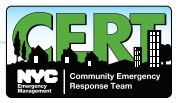 |
|
PARTNERS IN PREPAREDNESS is a program that helps organizations prepare their employees, services, and facilities for emergencies. Once registered, partners gain access to events and webinars and receive other preparedness resources. |
 |
|
The READY NEW YORK campaign encourages New Yorkers to be ready for all types of emergencies. Anyone can complete a readiness workbook, request an event or guide (in 13 languages and audio guides) to educate their community about preparedness. |
 |

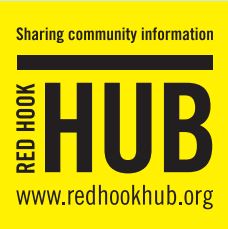
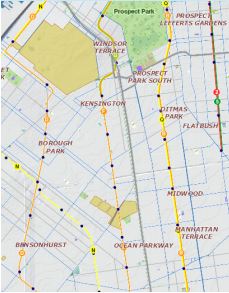
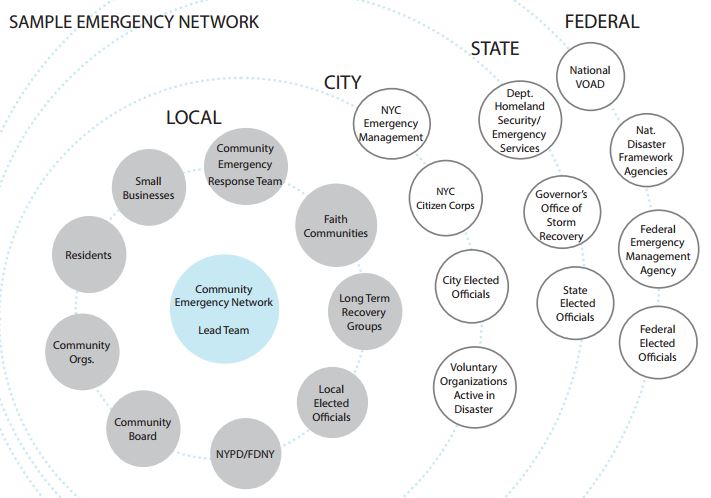
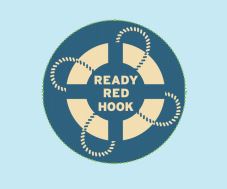
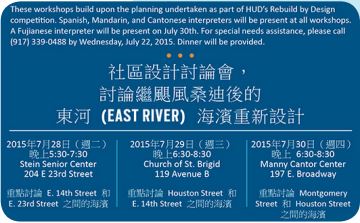
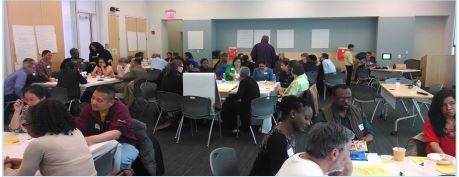
User Comments/Questions
Add Comment/Question